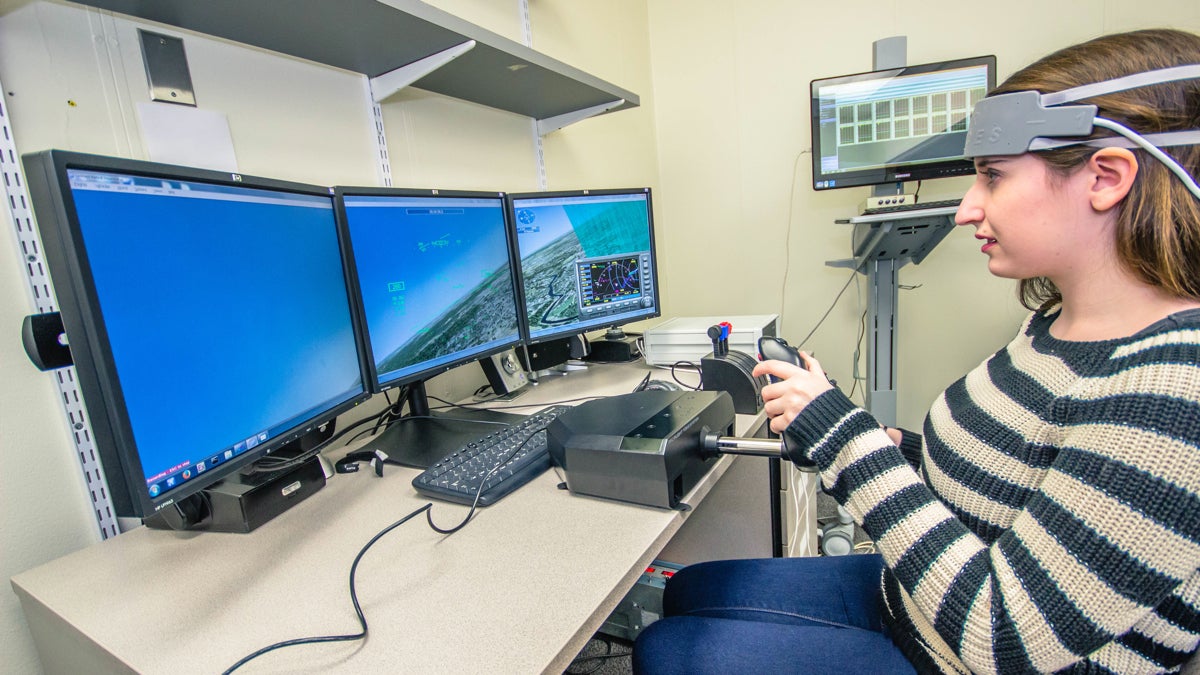Drexel University to advise the FAA on drone policy

Drexel University researchers are using functional near-infrared measurements of brain activity to evaluate how well pilots and air traffic controllers perform. (Patrick Craven/Drexel University)
Drones aren’t yet able to legally fly above 400 feet, but even the Federal Aviation Administration is preparing for a future in which they can.
The agency has selected Drexel University as one of 20 partner institutions to offer regulatory advice and conduct research on the challenges of safely admitting drones to the sky.
“With the introduction of unmanned systems, it’s going to be adding a whole new element of air controllers who are on the ground,” said computing and informatics professor Patrick Craven. “There’s a lot of unknowns there about how they will be able to effectively communicate to share the airspace.”
Drexel’s focus will be on the human factors involved in drone operation, including how airline captains and overtaxed air traffic controllers will need to change to avoid collisions.
Biomedical engineer Kurtulus Izzetoglu, for example, is using a kind of portable neuroimaging to understand the cognitive burden of pilots or air traffic controllers.
“We can monitor their brain and directly measure what their workload [was] at that moment,” he said.
Such a quantitative measurement could provide clues as to whether certain individuals need more training, and it could form the basis of FAA requirements, Izzetoglu said.
Craven’s group is looking for adaptations to technology that can improve performance, such as a simple change to an alert system.
“You might actually alter maybe the manner in which the alert occurs,” he said. “Or you withhold alerts for a certain period of time because you recognize that the operator is overloaded.”
In addition to package delivery and surveillance, Craven said drones are of particular interest to farmers who want to monitor their crops.
WHYY is your source for fact-based, in-depth journalism and information. As a nonprofit organization, we rely on financial support from readers like you. Please give today.

